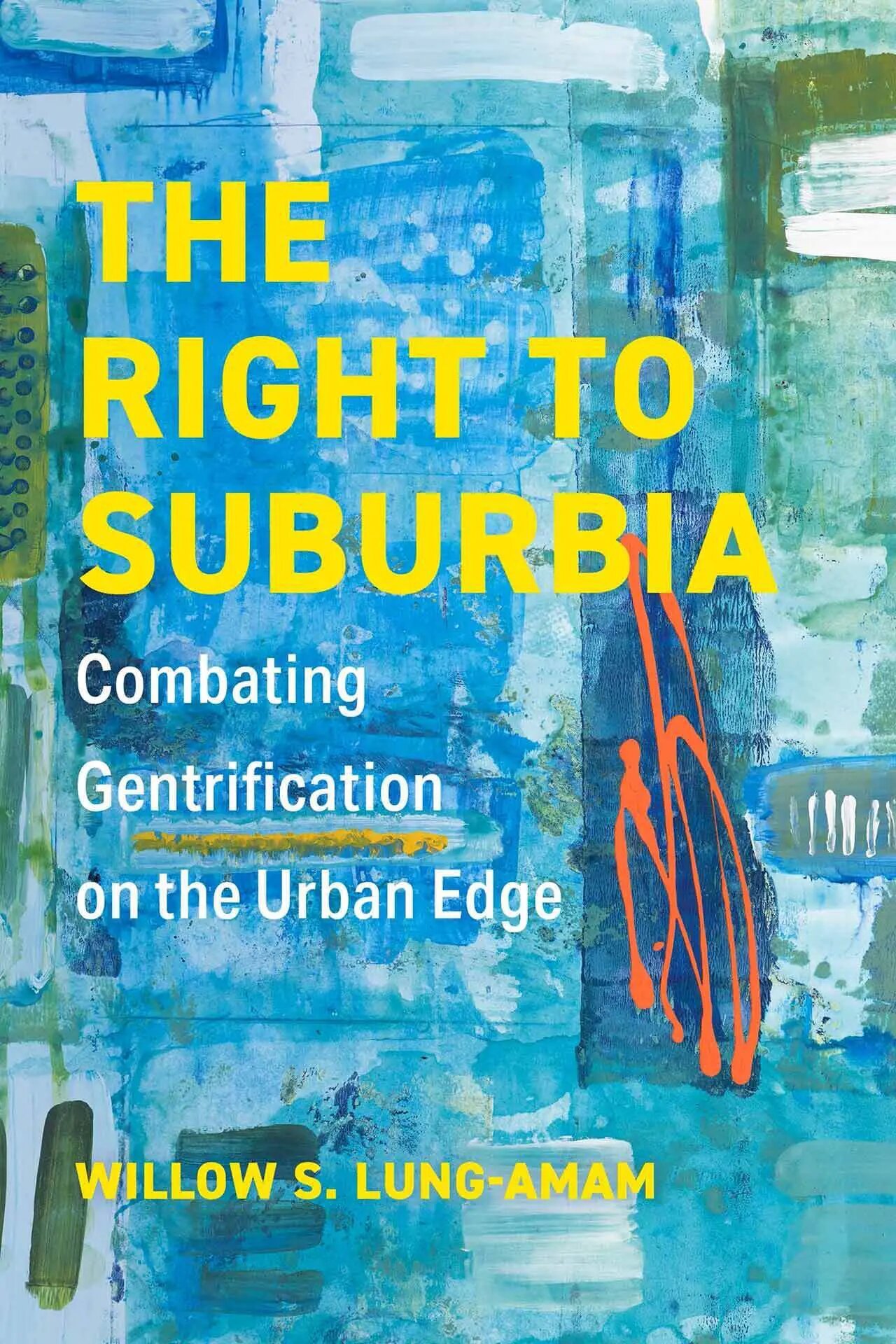
Ellsworth Avenue in Silver Spring, Md., sizzles on a summer evening: Residents stroll along its tree-lined sidewalks under the neon glow of upscale chain restaurants, retailers and a Whole Foods Market. Beyond the din of downtown is a different kind of sizzle: the intoxicating aroma of sliced meat frying in butter, garlic and onion—called tibs—wafting from one of many Ethiopian restaurants just outside the city center.
Many in Silver Spring’s Ethiopian population—one of the largest outside of Ethiopia—struggled to endure the redevelopment that spawned its flashy retail and entertainment district, and the rent hikes that followed. Now, they face new challenges with the construction of the state of Maryland’s light-rail Purple Line.
A new book released this week by University of Maryland Associate Professor Willow Lung-Amam asks the question: When a neighborhood is revitalized, who benefits? “The Right to Suburbia: Combating Gentrification on the Urban Edge” tells the story of people of color and immigrant communities fighting for their place in three rapidly developing American suburbs.
“I knew I wanted to write about this region, and I knew I wanted to write about it from the perspective of folks who were actually living here,” said Lung-Amam, who is director of UMD’s Small Business Anti-Displacement Network. “This is a story that’s been overlooked.”
Through a deep dive into Silver Spring and two other Maryland suburbs nestled along the edge of Washington, D.C—Wheaton and Langley Park—Lung-Amam reveals the history, politics and growing activism that has led to their varied yet interconnected fates. The book exposes the powerful influence of developers, government and white residents on the shaping of suburbs over a century and breaks down the complex process of gentrification, which uproots communities and culture during redevelopment.
But at its heart, “The Right to Suburbia” is about people: her in-laws, who worried at their Wheaton kitchen table about the future of their diverse neighborhood; the region’s Black residents, who have been systematically and serially displaced; and the growing new wave of suburban activists working for a voice in shaping their community’s future.
“Residents, small businesses and activists have learned from each other to build the tools that made each subsequent case more successful in pushing for new protections for vulnerable people and places,” said Lung-Amam.
Here are five takeaways from “The Right to Suburbia”:
Gentrification doesn’t just happen to residents—or in cities.
While scholars have examined gentrification and displacement in cities for decades, it has been poorly studied in suburbia, said Lung-Amam. The discourse around gentrification is largely residential, yet during her research on suburbs Lung-Amam saw that most of the impacts were on small businesses. “It matters that we’re talking about places other than urban communities because it broadens the way we talk about this phenomenon, who’s affected and what we can do about it.”
The history of suburbs’ racist development endures.
Restrictive covenants of the early 20th century created white enclaves around the D.C. area that forced Black people to communities that others deemed undesirable and treated as “dumping grounds” on the city’s outskirts, said Lung-Amam. Economic, legal and social shifts that later brought Black residents to these predominantly white areas spurred white flight and eventual disinvestment.
But it’s cyclical: As redevelopment makes some areas more appealing, the communities of color that have kept the neighborhood afloat often become targets for urban renewal and other disruptive policies. “Gentrification has historically followed Black and brown people wherever they go,” she said. “They weren’t in mind when these places were built, or when they were redeveloped.”
Transit can close doors.
When Metro opened a stop in Clarendon, Va., in 1979, the then-vibrant “Little Saigon”—launched by immigrants capitalizing on cheap rents offered during Metro’s construction—were quickly bought out or evicted by white developers with plans for a more upscale, dense shopping and business corridor. Forty years later, a similar scenario could play out in Langley Park, which will host one of the 21 Purple Line stops. “In other cases, people were reacting after the fact,” Lung-Amam said. “What I’ve learned from these cases is you have to start organizing early.”
Policy can make, and break, a community.
Tax credits, incentives and “upzoning,” which boosts density by changing zoning laws, are key to fast-tracking redevelopment; but without the right protections, these government tactics can harm the community already living there. “Planners often designate disinvested areas for the kind of development they would like to see, but we can’t do that at the expense of residents and businesses already in those places,” said Lung-Amam.
Suburban activists are ‘building the ship as it’s sailing.’
Unlike urban areas, where residents have had decades of experience organizing against displacement, suburbs don’t have the same legacy, playbook or tools, said Lung-Amam. But in researching her book, she has seen their ability over time to protect communities grow and evolve.
In Langley Park, organizations like UMD’s Purple Line Corridor Coalition have launched a “grass top” movement to engage with county and state leaders, developers, and local community organizations along the light rail corridor to prevent the displacement of vulnerable communities. “Organizing matters at every step and at many levels,” she said.
More information:
Lung-Amam, W.S. The Right to Surburbia (2024).
Provided by
University of Maryland
Citation:
Whose ‘right to suburbia’? New book exposes the banishment and battle for a place in Washington’s suburbs (2024, September 24)
retrieved 24 September 2024
from https://phys.org/news/2024-09-suburbia-exposes-banishment-washington-suburbs.html
This document is subject to copyright. Apart from any fair dealing for the purpose of private study or research, no
part may be reproduced without the written permission. The content is provided for information purposes only.
